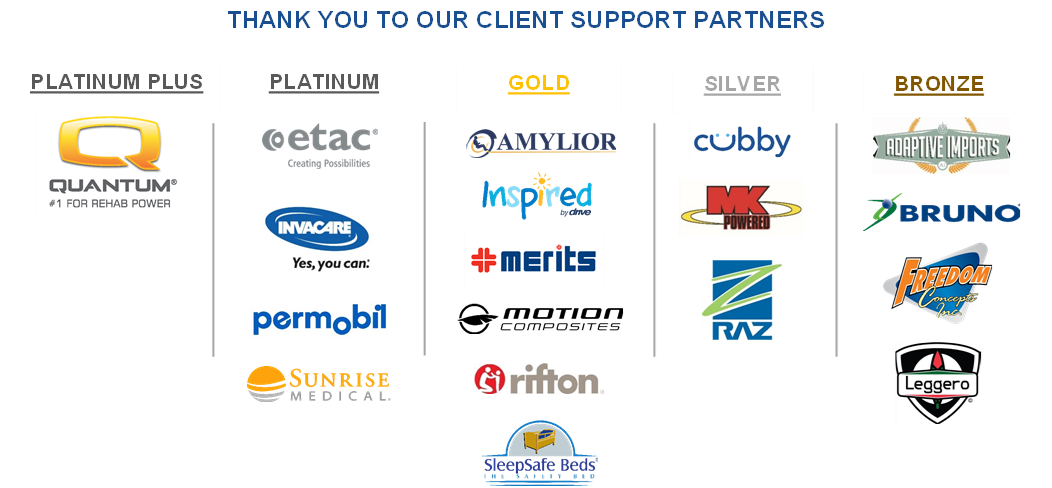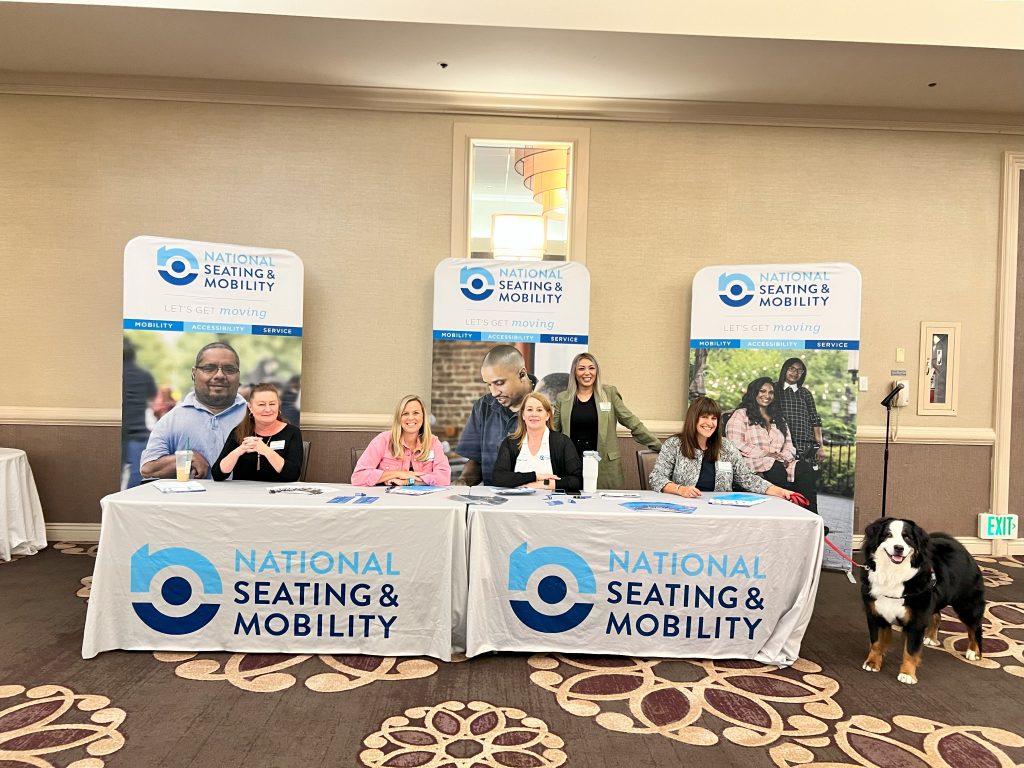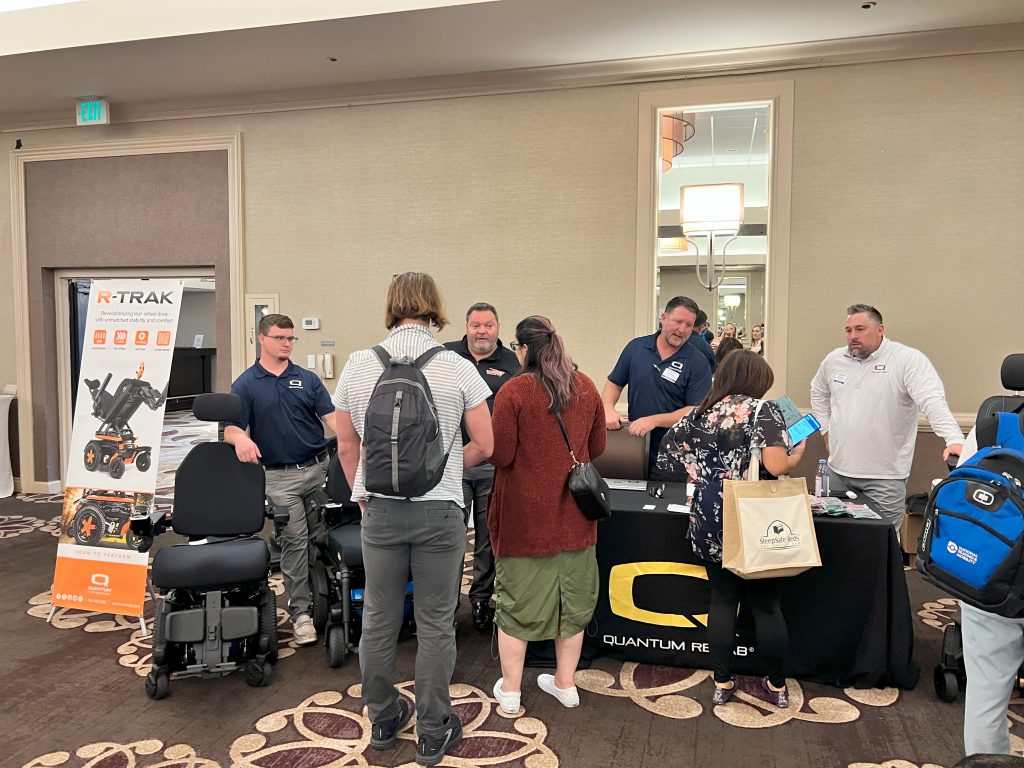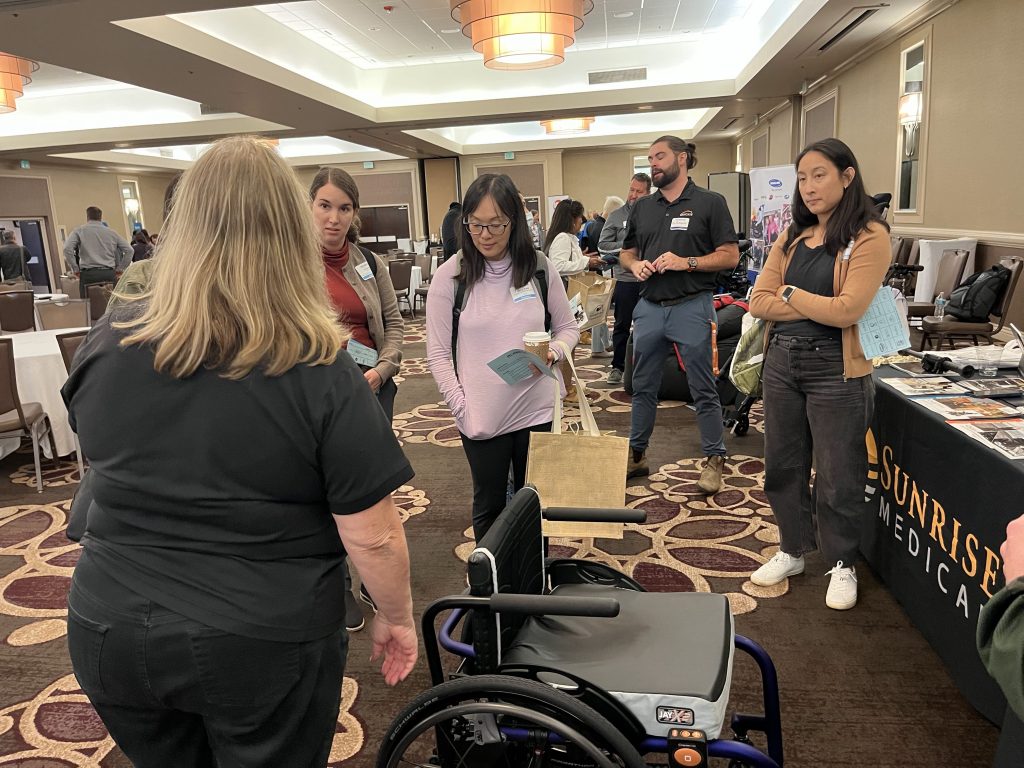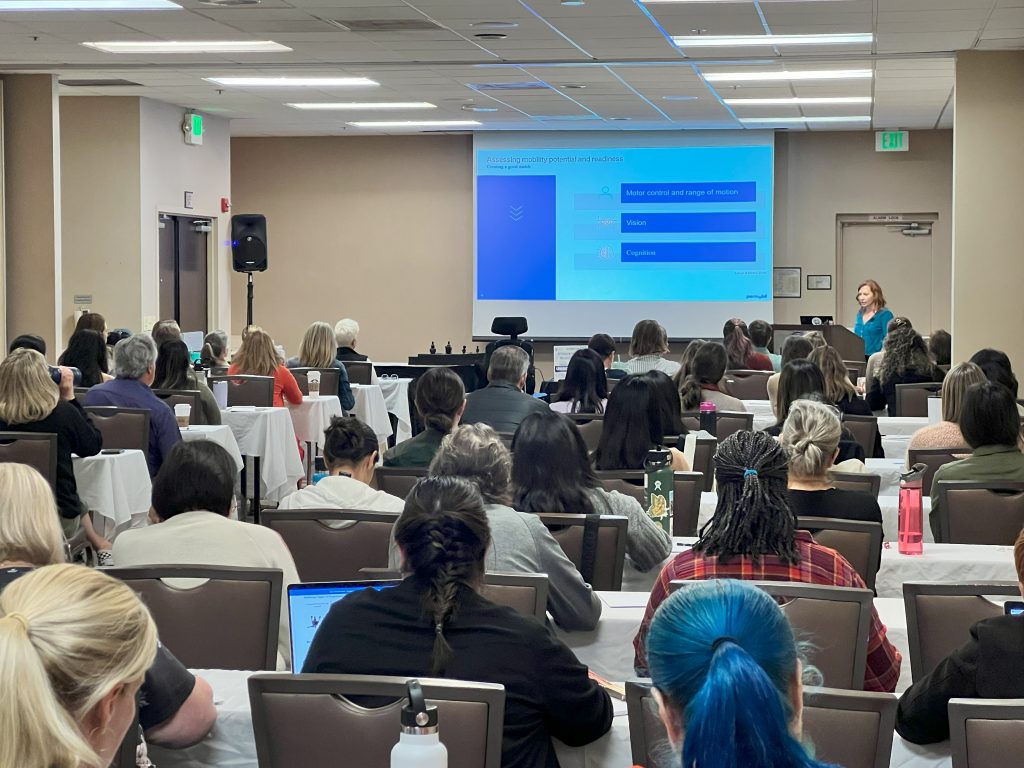ANAHEIM MOMENTUM ACADEMY EDUCATION & TECHNOLOGY EXPO
Friday, September 5, 2025
DoubleTree
Buena Park, CA
Event Highlights
- Earn up to 6 hours of continuing education (CE) credits for PT, PTA, OT, COTA, ATP
- CE Courses approved by California Education Connection
- Network with industry professionals
- Exhibit hall with the latest assistive technology
- Breakfast and lunch provided
The rate is: $69 for up to 6 CE credits
DOUBLETREE BUENA PARK

7000 Beach Blvd, Buena Park, CA 90620
Deadline to reserve a room at $129 rate is Wednesday, August 20.
SCHEDULE OF EVENTS
7:00am - 7:45am: Registration
7:45am - 8:00am: Kick-off
8:00am - 12:00pm: Education Courses
12:00pm - 1:00pm: Lunch
1:00pm - 5:00pm: Education Courses
The Supplier Exhibit Hall will be open throughout
the day with 2 hours of dedicated exhibit hall time.
Click here for full event schedule.
CONTINUING EDUCATION COURSES
The Drive for Function and Development: Alternative Drive Control Considerations for Early Power Mobility
0.1 CEU / Beginner
Presented by: Jennifer Janowicz PT, DPT
Quantum Rehab
Assessing an end user for power mobility can be an intimidating task. Decisions that are made will have an impact on the individual’s quality life, functional mobility, physical well-being, and social interactions. This task can seem even more daunting when it comes to the pediatric end user. Children have the natural desire to move, explore, and learn. Research has shown that there is a strong correlation between self-initiated mobility and the development of visual, cognitive, social, language, and perceptual skills. This course will discuss the characteristics and decision-making process for alternative drive control devices, as well as the special considerations on early power mobility intervention. Potential assessment and training tools for pediatric power mobility will also be explored.
Advancing Child Development: The Role of Gait Trainers in Mobility
0.1 CEU / Intermediate
Presented by: Christy Natale, DPT, ATP/SMS, CRTS
Sunrise Medical
This one-hour course will be a recap of the typical gait development and its critical role in a child's brain and musculoskeletal growth. This course will delve into the numerous benefits of promoting early active mobility in children with additional needs, focusing on hip joint and muscle development. Participants will explore the evidence on gait trainers, evaluate the pros and cons of various styles, and learn about the innovative features and accessories of gait trainers. These tools can significantly enhance child exploration, interaction, and participation. Real-world case studies will illustrate the practical application of clinical theories using gait trainers.
Balancing Function and Independence: Clinical Considerations for Power Adjustable Seat Height and Anterior Tilt
0.1 CEU / Beginner
Presented by: Jennifer Janowicz PT, DPT
Quantum Rehab
Power wheelchairs are designed to augment function when functional mobility is compromised or lost. However, this is not the only benefits that the power mobility systems can provide. There are critical components of this system that also facilitate or improve the end user’s ability to complete functional activities/ADLs, support their physical and mental health, provide independent repositioning for pressure relief, increase tolerance of the seated position, and increase the overall satisfaction of the equipment. These critical components are known as power positioning devices. While there are several different types of power positioning products on the market, this presentation will focus on the clinical benefits of power adjustable seat height and anterior tilt.
Using Tilt Bases for Pressure, Posture, Function, and Participation
0.1 CEU / Beginner to Intermediate
Presented by: Christy Natale, DPT, ATP/SMS, CRTS
Sunrise Medical
The seat to back angle or a posterior, anterior, or lateral tilt can be incorporated into a seating system to provide increased opportunities for pressure relief, postural support, function, and participation. What benefits does an increased or decreased seat to back angle provide? When should it be adjustable? What are the benefits of fixed seat to back angles? What about tilt? How and why are tilt incorporated into a rider’s day? This session provides an overview of how tilt and seat to back angle recommendations can be incorporated into a stroller, dependent, or manual tilt wheelchair system. Available evidence and rider experiences will be shared to illustrate interventions focusing on seat to back angle and tilt.
Changes with Age: Giving You the Justification for Custom Manual Wheelchairs for the Geriatric Client
0.1 CEU /
Presented by: Christie Hamstra, PT, DPT, ATP
Motion Composites
The geriatric client can be easily overlooked as one who could benefit from a custom fitting, ultralightweight, adjustable manual wheelchair. They are too often provided the “basic” wheelchair without much thought. This course with review normal physiological changes that come with aging, and how proper wheelchair seating, base selection, fitting, and set up, can be justified for the geriatric client.
Pediatric Adaptive Standing: Five Considerations for Optimizing the Outcomes
0.1 CEU / Intermediate
Presented by: Allison Weissman, PT, DPT
Rifton
This 60-minute presentation will address five novel and up-to-date considerations for pediatric adaptive standing. Specifically: standing as physical activity, positioning for postural control, hip abduction positioning and contracture management, active participation in the sit-to-stand transfer, and creating opportunities for social engagement and participation in standing. Current evidence supporting these interventions will be presented along with case examples to illustrate applications of these concepts. A segment for Q&A will conclude the session.
Center of Gravity: Understanding the Functional Impact
0.1 CEU / Beginner
Presented by: Christie Hamstra, PT, DPT, ATP
Motion Composites
Define and examine center of gravity as it relates to manual wheelchair configuration. Review evidence related to configuration and optimal manual wheelchair performance.
Explore the impact of vertical and horizontal axle position changes on end user function, safety, and upper extremity health.
Positioning for Participation and Function: 24-hour Postural Support
0.1 CEU / Intermediate
Presented by: Christy Natale, DPT, ATP/SMS, CRTS
Sunrise Medical
This course is designed for clinicians to enhance their knowledge and clinical application of the subject matter. A 24-hour postural care program provides for seating and mobility intervention as well as when the individual is not in the wheelchair. This session addresses options for alternative positioning, toileting, bathing, and sleeping. Physiological and anatomical theoretical principles will be addressed incorporating how equipment can address an individual's postural needs.
Evidence-Driven MWC Configuration: Optimizing Fit and Function for Different Body Types and Propulsion Methods
0.1 CEU / Intermediate
Presented by: David Miller, MA, OTR/L, ATP/SMS
Permobil
This 1-hour course is designed to help providers and clinicians develop best practices for recommending complex rehab technology (CRT) manual wheelchairs for individuals with varying body proportions and propulsion styles. Using the ICF model, the course will guide participants through the decision-making process, balancing evidence with functional outcomes to ensure successful CRT seating and wheeled mobility solutions. Through case examples and clinical reasoning discussions, participants will learn to identify clients' individual clinical and functional goals, driving configuration and component recommendations that enhance functional mobility outcomes, participation, and overall satisfaction with the equipment, ensuring a good person-technology match.
Are Adjustable Wheelchair Cushions Better?
0.1 CEUs / Intermediate
Presented by: Amanda Storey, OTR/L
Etac/Ki Mobility
Many consider adjustable wheelchair cushions to be the ultimate solution for clients at high risk of pressure injuries. However, they may not be fully aware of what defines an adjustable wheelchair cushion, how the technology works, and what it should accomplish when properly constructed, adjusted, and used. Every interaction between an individual and a different cushion is a unique result of those two specific variables at that point in time. Can you know whether a specific adjustable cushion can be properly adjusted for any individual’s seating needs without trialing it first? Further, can you determine the proper adjustment prior to trial? Over time, will the adjustable characteristics of the cushion be able to accommodate changes in clients’ needs? Should a good adjustable cushion offer the adjustment needed to properly fit at initial issue, as well as the ability to adjust as an individual’s needs change?
Tailored Seating Solutions for High-Risk Clients
0.1 CEU / Beginner
Presented by: David Miller, MA, OTR/L, ATP/SMS
Permobil
In the wheelchair seating arena, providing a seating system for the clients at high risk for pressure injury can be both intimidating and overwhelming. This 1-hr course provides an in-depth understanding of how to incorporate evaluation findings, seating characteristics, and client goals when formulating equipment recommendations for high-risk clients. Participants will learn to identify clinical indicators of pressure injury risk, apply ISO wheelchair cushion performance standards, and recognize key material traits in seating products. A complex case example will be discussed to illustrate the process of integrating evidence and client goals to enhance functional independence.
By the end of this course, participants will be equipped with the knowledge to make informed, evidence-based, and client-centered seating recommendations, ultimately improving the quality of life for wheelchair users.
Pediatric Wheelchair Cushions and Backs - Matching Technology and Needs
0.1 CEU / Intermediate
Presented by: Amanda Storey, OTR/L
Etac/Ki Mobility
For many years, there were only a couple basic choices of primary supports for pediatric wheelchair users: custom configured or custom molded. The available options for primary supports, backrests and cushions, for the pediatric client have expanded considerably over the years, and today there are a number of off-the-shelf, out-of-the-package products available. This greater range of available products requires professionals to be more discerning regarding the variety of choices before them, and recognize which product accomplishes the objective in a clinically appropriate way. We know that children are not just a smaller version of the adult client and that their needs can be different. What does the research say about what is important for the pediatric client regarding providing postural support, addressing postural asymmetries, maintaining tissue integrity, facilitating function, etc. This presentation will explore the types of primary supports on the market, and seek to inform clinical practice by discussing considerations and applications of the various types of technology for primary supports for the pediatric wheelchair user.
Explore the course offerings. You can pick & choose the classes you'd like to attend during registration.
